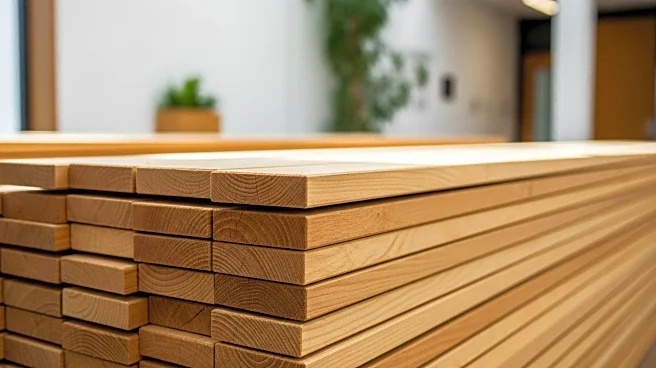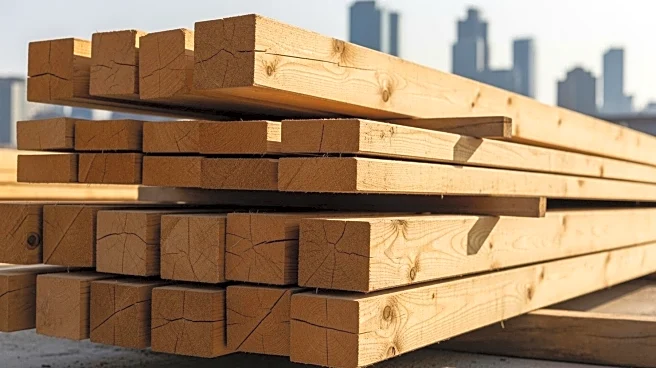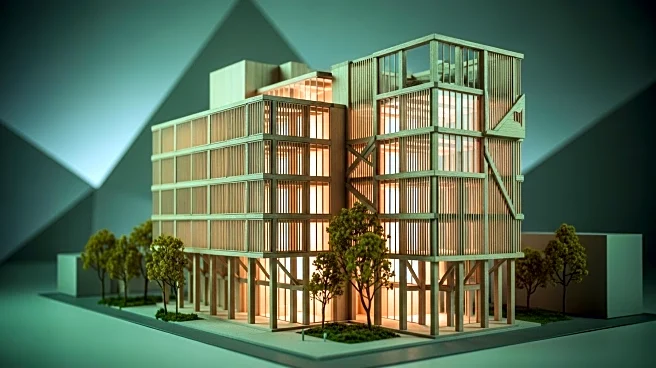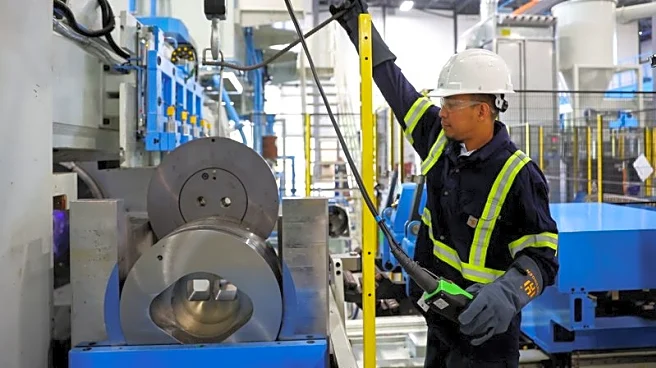What is the story about?
What's Happening?
Canada is facing a dual crisis of housing supply shortages and high greenhouse gas emissions from construction materials like cement and steel. To tackle these issues, Canada is promoting the use of mass timber and modular manufacturing for housing. Mass timber, which is renewable and stores carbon, is being considered as a viable alternative to traditional materials. The approach aims to industrialize housing production, making it faster and more sustainable. The strategy includes building regional factories and creating standardized designs to streamline construction processes.
Why It's Important?
The shift to mass timber and modular construction could significantly reduce Canada's carbon footprint by cutting embodied carbon in buildings. This approach not only addresses environmental concerns but also aims to meet the growing housing demand efficiently. By adopting these methods, Canada could position itself as a leader in sustainable construction, potentially capturing a significant share of the global market for mass timber. The initiative also promises economic benefits by creating jobs in advanced manufacturing and reducing reliance on imported construction materials.
What's Next?
Canada plans to implement policies that support mass timber construction, including financial incentives for prefab builders and government contracts for modular housing. The country aims to produce one million cubic meters of mass timber by 2030, doubling by 2035. Challenges such as insurance premiums and building code inconsistencies need to be addressed to facilitate widespread adoption. If successful, Canada could become a major exporter of mass timber buildings, leveraging its forest resources and expertise.
Beyond the Headlines
The transition to mass timber involves overcoming institutional barriers, such as high insurance costs and inconsistent building codes. Addressing these issues could make mass timber a routine choice in construction, unlocking its advantages in cost, speed, and carbon storage. Additionally, Canada must focus on training specialized workers and stabilizing lumber prices to support this shift. Long-term strategies for timber reuse and carbon storage will be crucial to maintaining its environmental benefits.
AI Generated Content
Do you find this article useful?
















